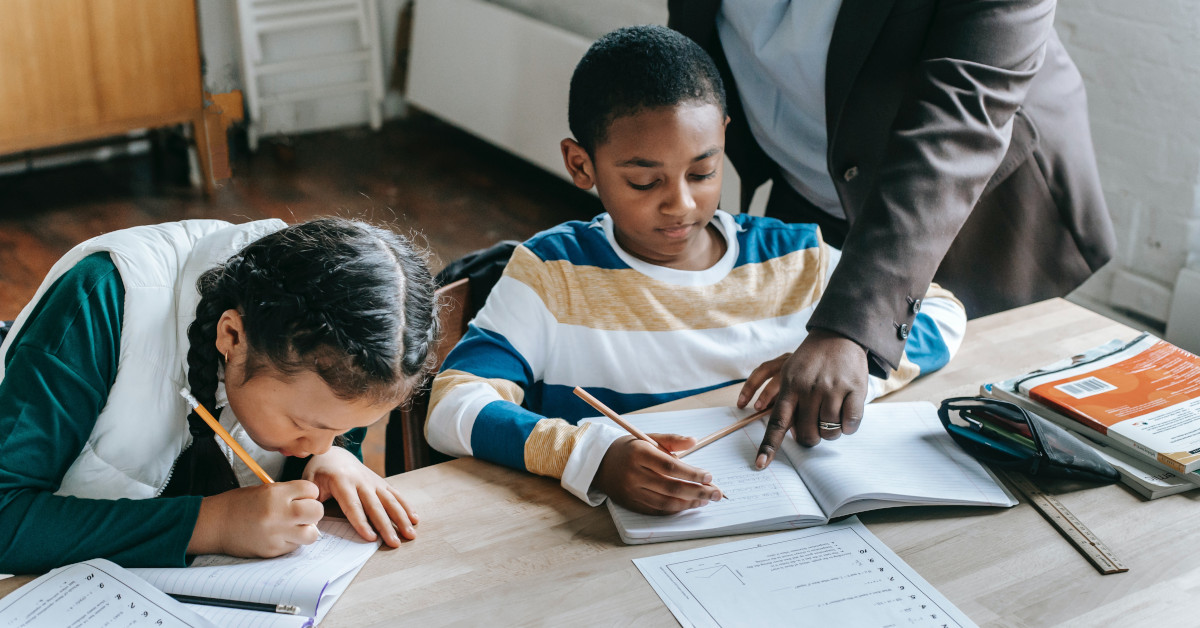
In education, vision plays a fundamental role in a child’s learning and overall development.
Young minds explore the world through their eyes, and 80% of a child’s learning is visual.
Here at Black Gates Optometrists, we understand the significance of good eyesight for children at school, and we know the signs that teachers and parents need to look out for that might point to a child having trouble with their eyes.
These are the top ten signs that a young student might need to visit an optometrist for an eye examination.
1. Avoiding close work, particularly when reading
Not wanting to do work, such as reading, at normal distances from their eyes, can suggest that a child is having trouble focussing their eyes at those distances.
2. Holding reading materials closer than normal
Just as with avoiding close work, a child regularly reading with books closer to their face than you would expect can be a warning sign. You need to remember that children’s eyes are better at focussing very close and at distance than an adult’s eyes, so it’s ongoing reading or working too close or far away that you need to watch for.
3. Losing their place while reading
If a child regularly loses their place while reading or continues to use a finger to maintain their place in the text of a book, this could be a sign that they are having keeping their eyes on where they are up to.
4. Confusing or omitting small words when reading
When they are learning to read, children often skip words that they don’t know, or that they just miss. As they get better at reading though, if you notice a child that regularly misses small words, or often gets smaller words wrong, or confused, this could be down to an issue with their eyesight.
5. Rubbing their eyes lots, or getting regular headaches
If a child rubs their eyes a lot, or regularly has headaches, particularly if their headaches tend to come on as a result of reading or writing at school, this can be a sign that they have trouble with their eyesight.
6. Closing or covering one eye, or squinting
Doing any of these things, especially when reading or writing, can be a symptom of a child having eyes that unbalanced, or having one eye that has trouble focusing.
7. One eye drifts or aims in a different direction
Normally both a child’s eyes look in the same direction. When working or reading at close distances, eyes may look like they are crossed, and that is normal, but if you ever notice a child who has one eye that drifts occasionally, that needs investigating.
Likewise with crossed eyes. While a child’s brain compensates for eyes that look in different directions, and they see one clear image, having crossed eyes can long-term lead to permanent reduced vision in one eye.
8. Having a short attention span for their age
While this isn’t something that you would normally associate with eyesight, having vision problems can be a cause of attention span issues in children. While there are lots of other things that could cause lack of attention span in kids, problems with their eyes are something that it quick and easy to test for.
9. Poor hand-eye coordination
Children naturally have a wide range of ability when it comes to hand-eye coordination such as playing with a ball. However, if a child has unusual trouble catching, kicking, or hitting balls, this could be down to their eyes not working properly. If you do notice a student who has this problem, it’s well worth checking to see if they have any of the other symptoms here.
10. Consistently performing below potential
If you have a child in your class or school, that you really don’t think performs as well as they could, and there is no obvious reason for this, then you might want to suggest that they get their eyes checked at an optometrist.
Have you got any questions about children you think might be having trouble with their eyes? We’re here to help.
For all the top ten symptoms of children having trouble with their eyes at school we have listed, bad eyesight is only one of the possible causes. For each of the ten symptoms, there are a range of things that might be causing the issues, but eyesight is one of the few that is quick, easy, and relatively cheap to check. It’s also one of the easiest to diagnose and fix.
For teachers, one of the important things to do is watch out for children that tick two or more of the symptoms listed here. If you have a child that show two, three or more of these signs of vision issues, then we would suggest that you talk to the child’s parents and suggest that they might want to get their child’s eyesight tested at a reputable optometrist such as Black Gates in Lower Hutt and Johnsonville.
We have fully qualified optometrists that have the experience and equipment necessary to give your child an eye test. We work with younger children regularly and know all the ticks to make the comfortable and cooperative while we give them a comprehensive eye test.
To make things easier for teachers, we have these ten signs that a student might be having trouble with their eyes as a PDF that you can print out and put in your classroom or staff room.
If, as a teacher, you have any questions about a student that might be having trouble with their eyesight, we are more than happy to talk to you, confidentially, and give you any advice or support that we can.

